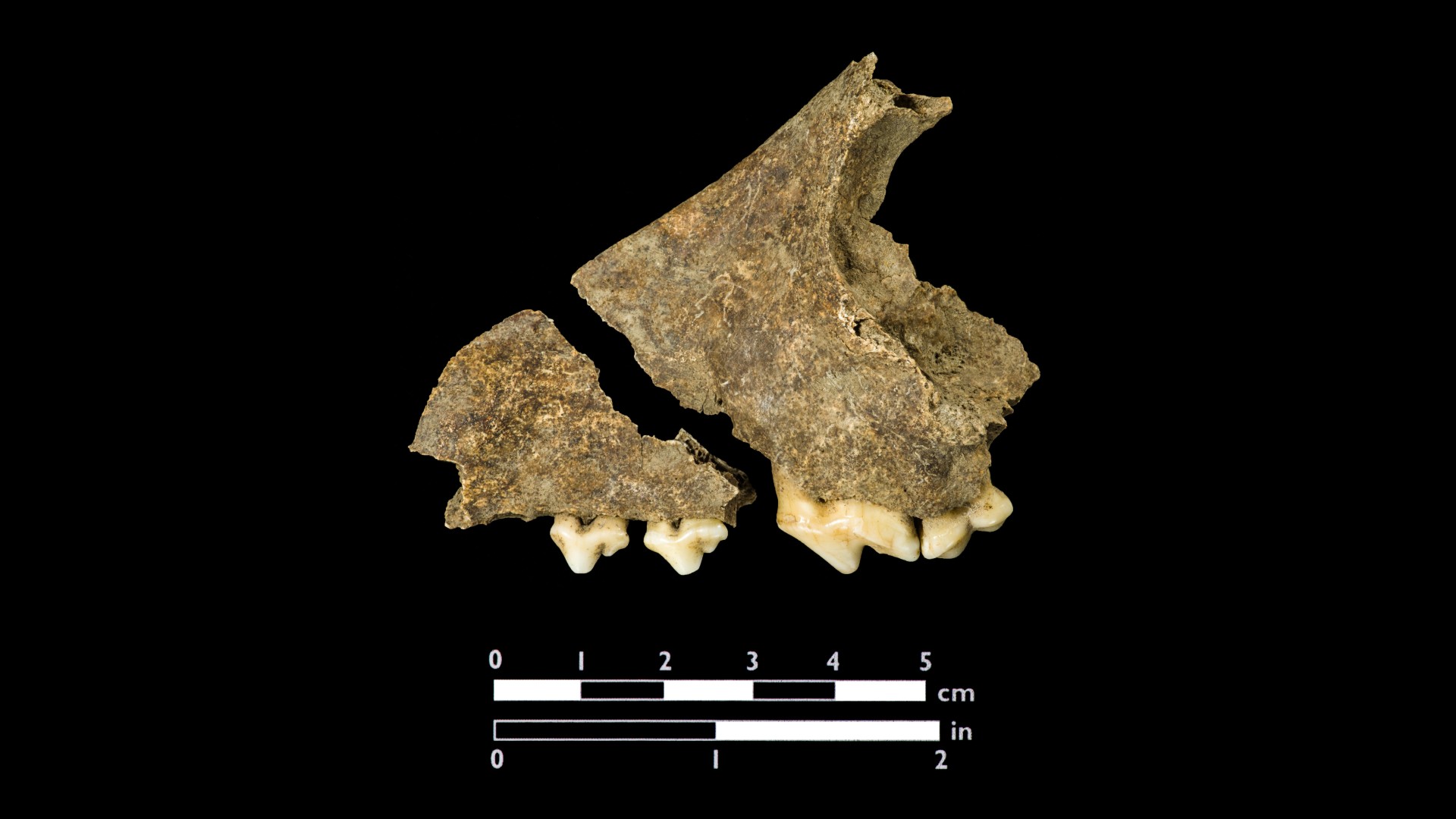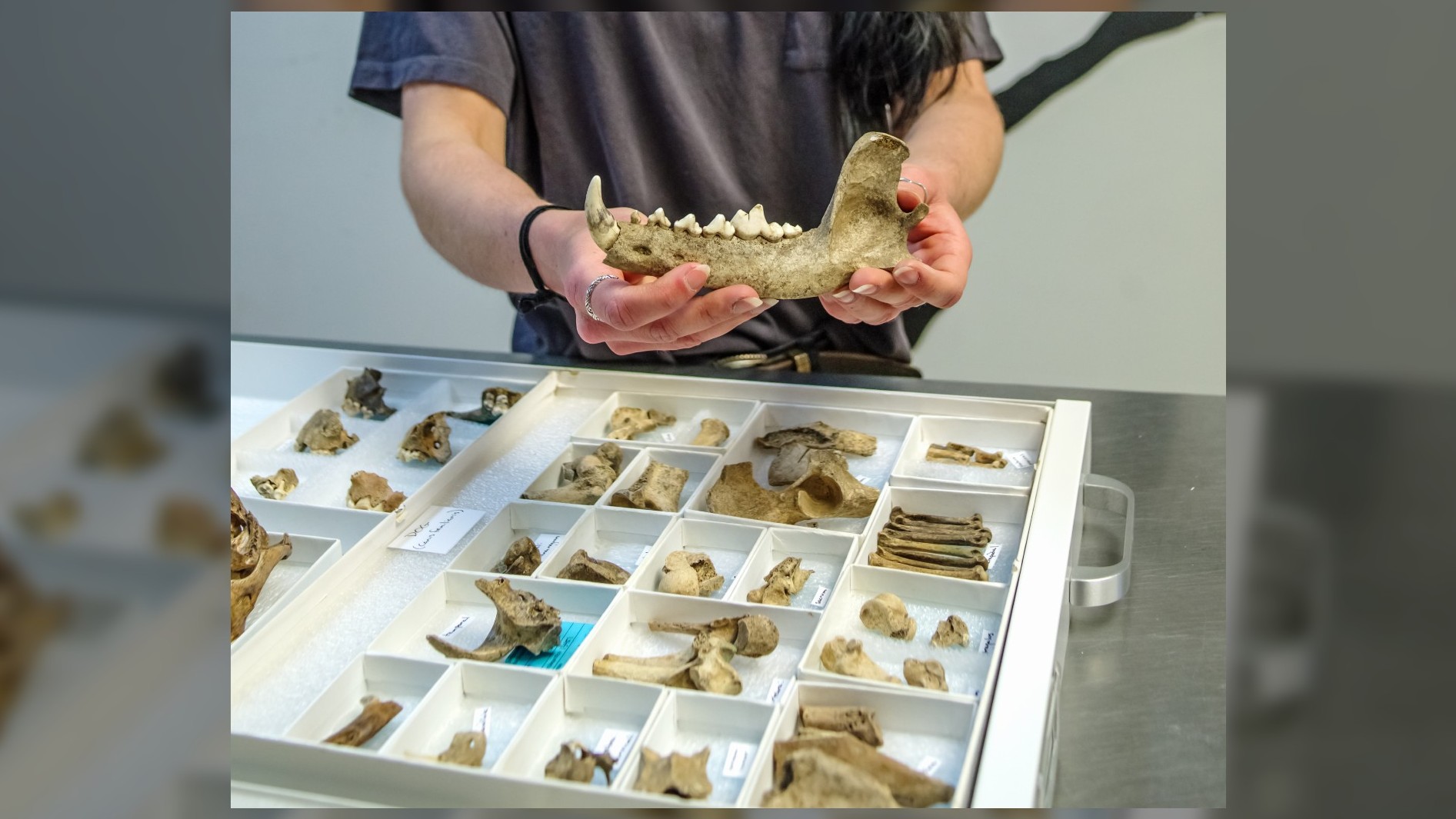Jamestown colonists killed and ate the dogs of Indigenous Americans
Archaeologists investigating Jamestown have discovered that colonists likely butchered and ate the dogs of Indigenous Americans.

Colonists at Jamestown — one of the first English colonies in North America — likely killed and ate local dogs, a new study finds.
Most of the dog bones excavated at Jamestown have cut marks on them, suggesting that "it is possible that they were eaten," study co-author Ariane Thomas, a doctoral student of biological anthropology at the University of Iowa, told Live Science in an email.
But given the starvation and evidence for human cannibalism at Jamestown, it is not surprising that people ate dogs, Thomas said.
These dogs were at least partly related to those that first roamed the continent before European settlers arrived, and have genetic similarities with dogs from the Hopewellian, Mississippian and Late Woodland periods of eastern North America, the researchers found.
Related: What happened to the 'vanished' colonists at Roanoke?
Nowadays, in contrast, most dog breeds in North America are of European ancestry.
Founded by the English in Virginia in 1607, Jamestown was the first English colony in the United States that was not abandoned. The English previously tried to settle Roanoke Island, in North Carolina, around 1587, but that attempt ended in disaster with the colonists disappearing.
Get the world’s most fascinating discoveries delivered straight to your inbox.
Jamestown nearly ended in disaster too, with food shortages wiping out many of the colonists. Some starving individuals became so desperate, they resorted to human cannibalism. Some of the Indigenous dogs were consumed during Jamestown's "Starting Time" during the winter of 1609 and 1610, the researchers found. However, Indigenous dogs were also eaten in the years before and and after the Starving Time, they noted.
"The results of this study suggest complex forces at play before, during, and after the Starving Time that influenced the presence of these dogs in the fort and led the residents of Jamestown to consume dogs with Indigenous ancestry," the researchers wrote in the study, which was published on May 22 in the journal American Antiquity.
DNA research
To learn more about Jamestown's pups, the team took DNA samples from 22 canid specimens excavated from Jamestown within the last 30 years that belonged to dogs living between 1609 and 1617. At least six of the dogs had "unambiguous evidence of Indigenous North American ancestry" from their mitochondrial genomes, or DNA that is passed from mother to offspring via the mitochondria in cells, the study found.
The findings suggest the people of Jamestown may have gotten some of the continent's original dogs through trade or other interactions with Native American groups.
"Based on archaeological research and historical documents, Jamestown was a place of interaction between European colonists and the Indigenous communities [living in the region]," Thomas said.
"It is likely that these dogs accompanied Indigenous people while those individuals were visiting — or perhaps living in — Jamestown," Thomas said.
These dogs were probably not "pets" that belonged to any one person, however. "The dogs were possibly the equivalent of stray dogs today," she noted.
Scholars react
Several experts told Live Science that the findings are consistent with other historical evidence from the time.
"This study confirms historical primary source evidence suggesting that English colonists and Powhatans [a Native American group that lived in the area] interacted with each other at Jamestown," Rachel Herrmann, a senior lecturer of modern American history at Cardiff University in the United Kingdom, told Live Science in an email.
"I am not surprised by these findings [they seem] logical based on earlier genetic studies of living as well as ancient American dogs," Peter Savolainen, a professor and head of the department of gene technology at the KTH Royal Institute of Technology in Stockholm, Sweden, told Live Science.
Editor's note: This article was originally published on April 8, 2022 after the research was presented at a conference. It was updated on May 28, 2024 after the research was published in a peer-reviewed journal.

Owen Jarus is a regular contributor to Live Science who writes about archaeology and humans' past. He has also written for The Independent (UK), The Canadian Press (CP) and The Associated Press (AP), among others. Owen has a bachelor of arts degree from the University of Toronto and a journalism degree from Ryerson University.





